Are you overwhelmed by the plethora of gym equipment options in the market? Choosing the right equipment is critical in creating an appealing, effective, and user-friendly environment for your customers. The challenge lies in knowing which equipment to invest in for your business.
Fortunately, we’re here to help. In this article, we’ll decode the complexities and offer a straightforward, comprehensive gym equipment list of diverse gym apparatus, their uses, and benefits. Whether you are a startup gym or a well-established fitness center looking to upgrade, this guide will assist you in making informed decisions that enhance your customer experience and elevate your gym’s reputation.
Read on!
Table of Contents
1. Cardiovascular Equipment
According to a report by Run Repeat, by 2024, cardio equipment like treadmills, ellipticals, and recumbent bikes will make up 65% of the total fitness market. Designed to increase heart rate and improve cardio fitness, these machines are perfect for any fitness regime. Each comes with its unique benefits and considerations that should be considered when adding them to a gym. Here are the following:
Treadmills
Treadmills are perhaps one of the most common pieces of gym equipment. As an expert and a gym owner, it is imperative to constantly explore newer treadmills models to provide clients with the best possible experience. They are simple, versatile and can provide an intense workout regardless of fitness levels. Take a look at the benefits of this machine:
Benefits:
- Can provide a range of workout intensities, from walking to running or hill climbing.
- Suitable for all fitness levels, with adjustable speed and incline settings.
- Many models come with advanced features like heart rate monitors, built-in workout programs, and calorie trackers.
- It mimics natural movement, hence provides an intuitive workout experience.
- Some high-end treadmills come with virtual running routes, giving a more immersive experience.
Considerations:
- The cost can range from moderate to high-end, depending on the features.
- They can take up significant floor space.
- Requires regular maintenance to ensure proper function.
- Noise could be a factor to consider, as treadmills can be noisy.
- They require a power source, which could impact gym layout and energy consumption.
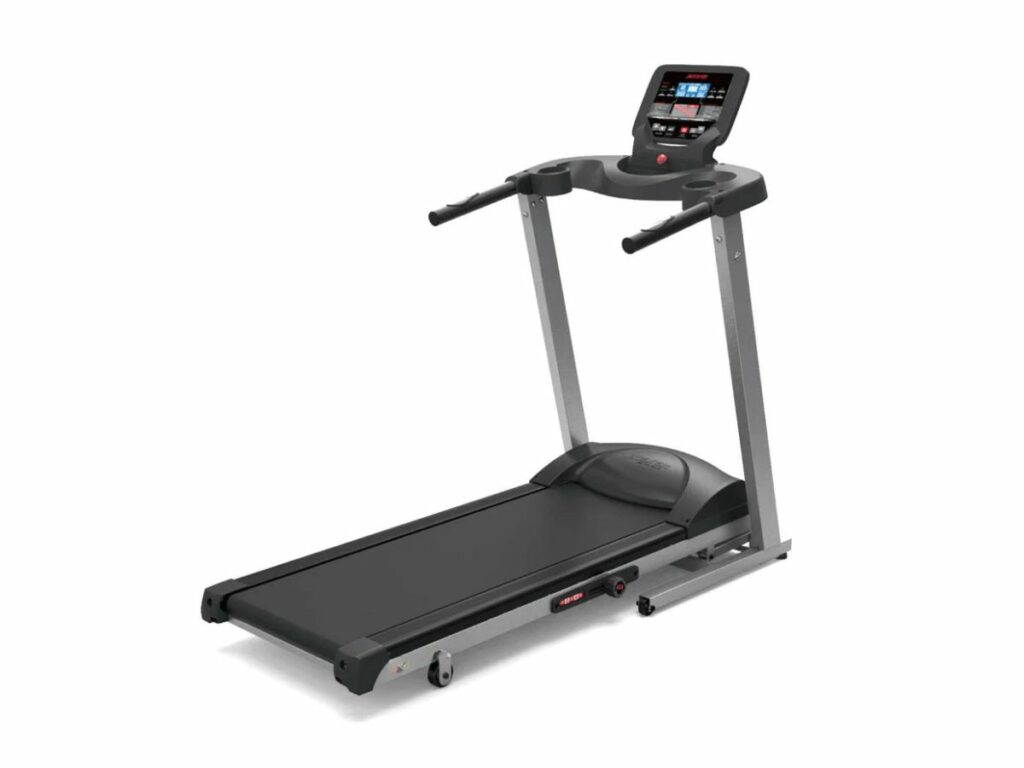
Stationary Bikes
Stationary bikes are another popular form of cardiovascular equipment. They come in several types examples are upright, recumbent, and spin bikes. Renowned for its top-tier gym equipment, Yanre Fitness offers an array of these stationary bikes, tailor-made to cater to various fitness levels and workout styles. Let’s delve at the benefits of this machine:
Benefits:
- Great for cardiovascular health and lower body strength.
- It’s a low-impact exercise that puts less stress on joints.
- Adjustable resistance levels cater to various fitness levels.
- Some models come with workout programs and heart rate tracking.
- Stationary bikes often take up less space than some other cardio machines.
Considerations:
- Unlike treadmills, stationary bikes focus primarily on lower body and may not provide a full-body workout.
- Seat comfort can be a problem for some users, depending on the design.
- High-end models can be expensive.
- Some users may find the workout less engaging compared to other cardio options.
- Bikes with advanced features require a power source and regular maintenance.
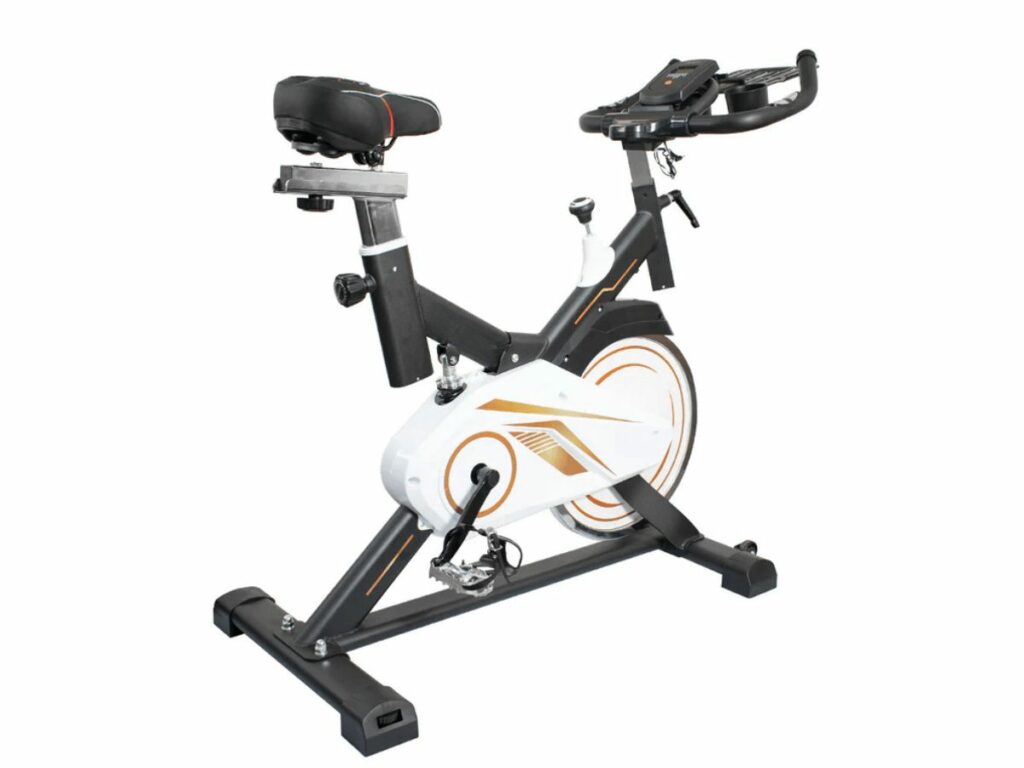
Elliptical Machines
Elliptical machines provide a full-body workout, combining both cardiovascular exercise and resistance training. They deliver an efficient way to enhance aerobic capacity, burn calories, and build muscle strength. I have tested that elliptical machines often prove popular due to their low-impact nature, providing a safe option for individuals with joint concerns or those starting their fitness journey.
Here are the benefits and considerations when having this machine:
Benefits:
- Provides a full-body workout
- Improves aerobic capacity
- Enhances muscle strength
- Low impact, reducing stress on joints
- Offers variable intensity for versatile workouts
Considerations:
- Requires a certain level of coordination to use effectively
- Can take up substantial space in the gym
- The cost of high-quality machines can be significant
- Maintenance and repair needs can be higher than some other machines
- Some individuals may find the motion unnatural or uncomfortable
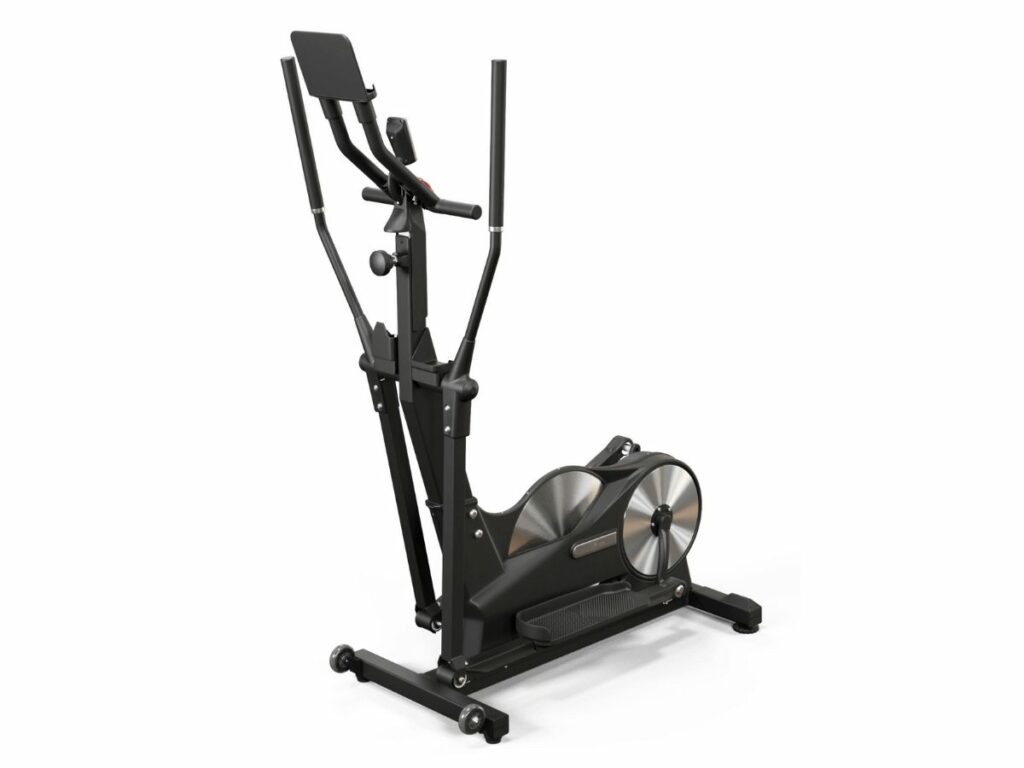
Rowing Machines
Rowing machines emulate the physical movements of watercraft rowing, offering a robust full-body workout. They engage both upper and lower body muscles and help to improve cardiovascular health and endurance. Here are more information about it:
Benefits:
- Provides a full-body workout
- Enhances cardiovascular health and endurance
- Builds upper and lower body strength
- Allows for adjustable resistance to cater to various fitness levels
- Low impact, reducing stress on joints
Considerations:
- The form is crucial for effectiveness and avoiding injury
- Can take up substantial space in the gym
- Some users may find the motion repetitive
- The cost of high-quality machines can be significant
- Regular maintenance is required to keep the machine in good condition
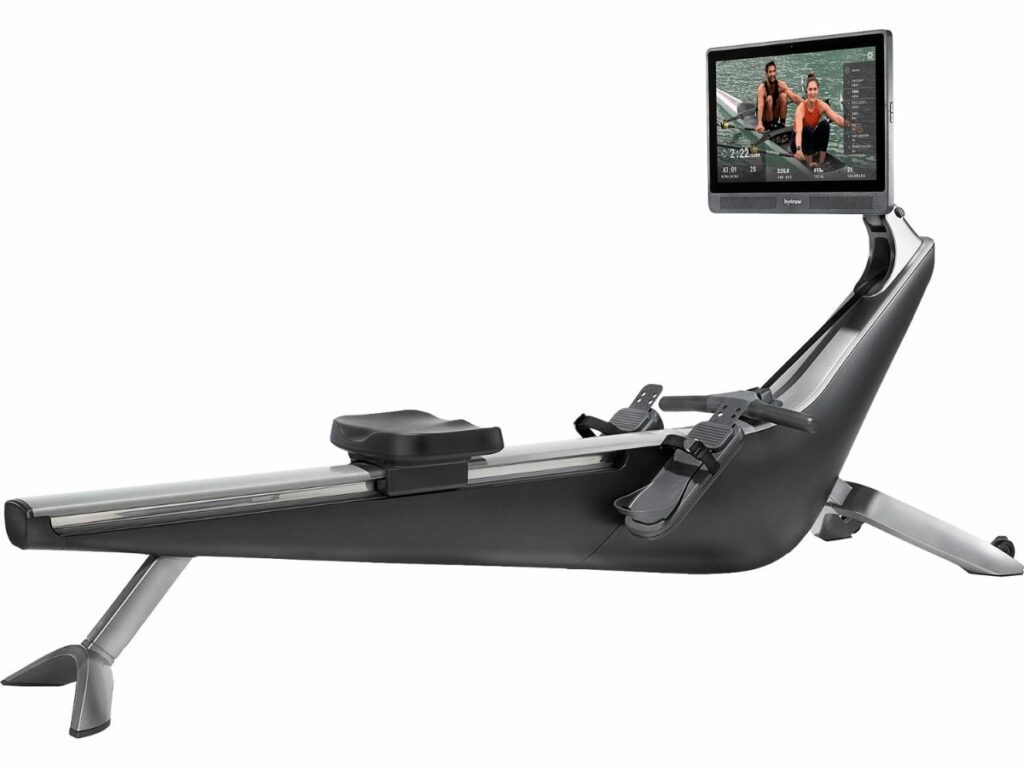
Stair Climbers
Stair Climbers mimic the motion of climbing stairs, which helps to improve cardiovascular fitness, build lower body strength, and increase calorie burn. As per Run Society, an intense stair-climbing exercise session will produce more aerobic benefits in a shorter amount of time than running or walking, one hour of stair climbing will burn approximately 1,000 calories. Additionally, this machine is a part of the commercial strength equipment lineup designed to deliver efficient workouts. Let’s know more about this machine:
Benefits:
- Enhances cardiovascular health
- Builds lower body strength
- Effective for calorie burn
- Requires less space compared to some other cardio equipment
- Allows for adjustable resistance to cater to various fitness levels
Considerations:
- Users need to ensure correct posture to prevent unnecessary strain
- Can be challenging for beginners or individuals with lower body injuries
- When using a stair climber, the core muscles play a significant role in maintaining stability and balance throughout the exercise
- Stair climbers provide an effective way to target and tone the lower body muscles, including the calves, glutes, quads, and hamstrings
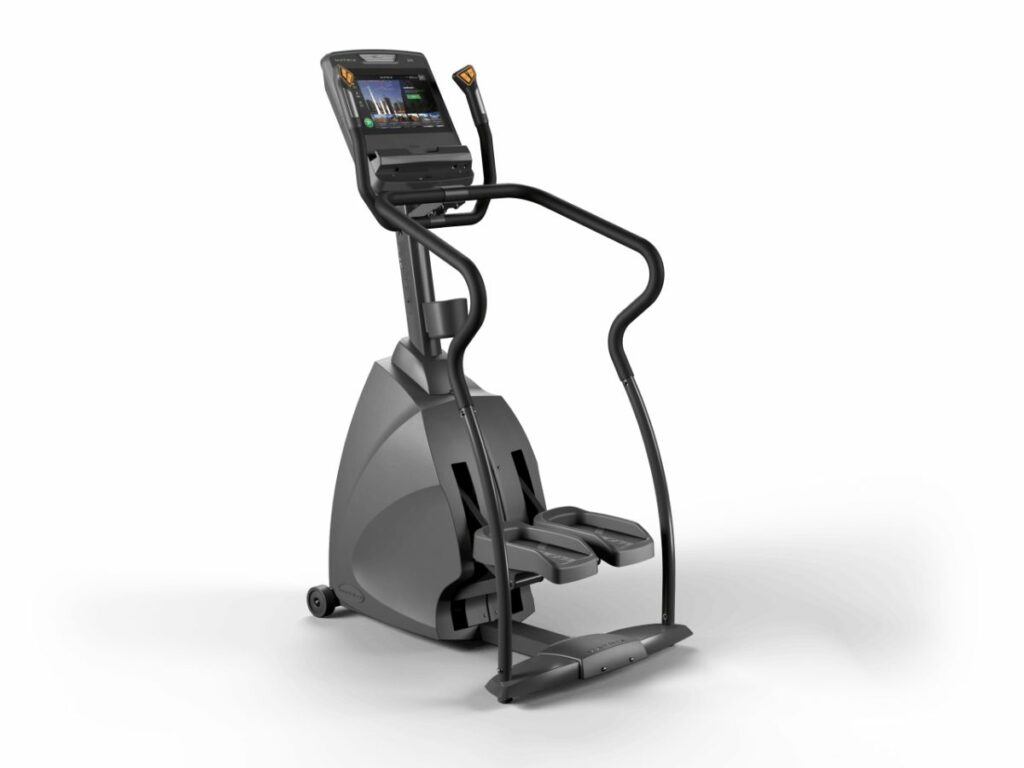
2. Strength Training Equipment
Strength training equipment forms the foundation of any fitness center or gym. These tools are fundamental to enhancing muscular strength and endurance. The following sections delve into the most popular strength training equipment, namely:
Free Weights
Free weights are a ubiquitous part of any gym setup and typically include dumbbells, barbells, and kettlebells. Incorporating these into workouts can lead to significant improvements in muscle strength, coordination, and balance. Below are free weights machine with its advantages and considerations:
Dumbbells
Dumbbells are handheld weights that come in various sizes and materials.
Benefits:
- They provide a vast range of motion for various exercises.
- Dumbbells allow simultaneous and independent work on both sides of the body.
- They help develop better muscle balance and coordination.
- They are beneficial for targeted muscle group workouts.
- Dumbbells are perfect for home workouts due to their compact size.
Considerations:
- It is essential to learn the proper form before using dumbbells to avoid injuries.
- They can be challenging for beginners without proper guidance.
- Regular maintenance is needed to prevent rust and keep them in good condition.
- It may require several sets of varying weights for different exercises.
- Dumbbells may not be ideal for training heavier weights compared to machines or barbells.
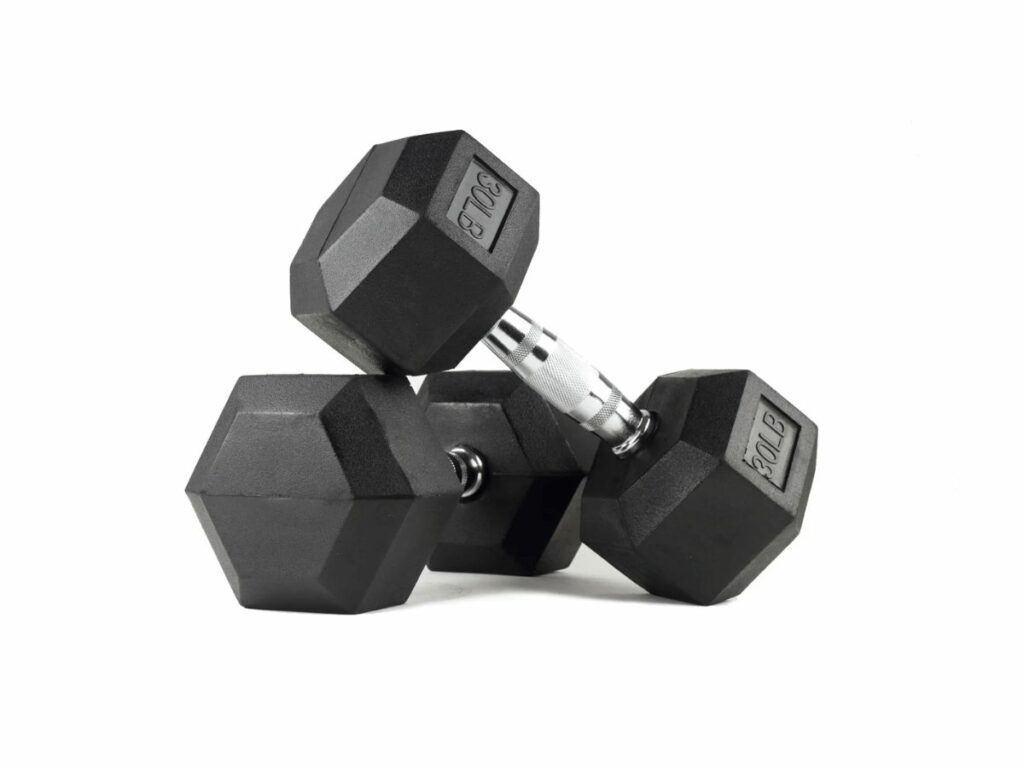
Barbells
Barbells are long bars, typically paired with weight plates on either side.
Benefits:
- Barbells enable lifting heavier weights, promoting more significant strength gains.
- They are ideal for compound movements like squats and deadlifts.
- Barbells improve balance and coordination through symmetrical muscle growth.
- Training with barbells can mimic real-life lifting situations.
- They are an integral part of powerlifting and weightlifting competitions.
Considerations:
- Barbells may require a spotter for safety, especially for heavy lifts.
- Proper form and technique are crucial to avoid injuries.
- They may not be suitable for people with certain types of injuries or physical limitations.
- Barbells require more space for storage and use than other types of free weights.
- Regular maintenance and care are required to prevent damage and ensure longevity.
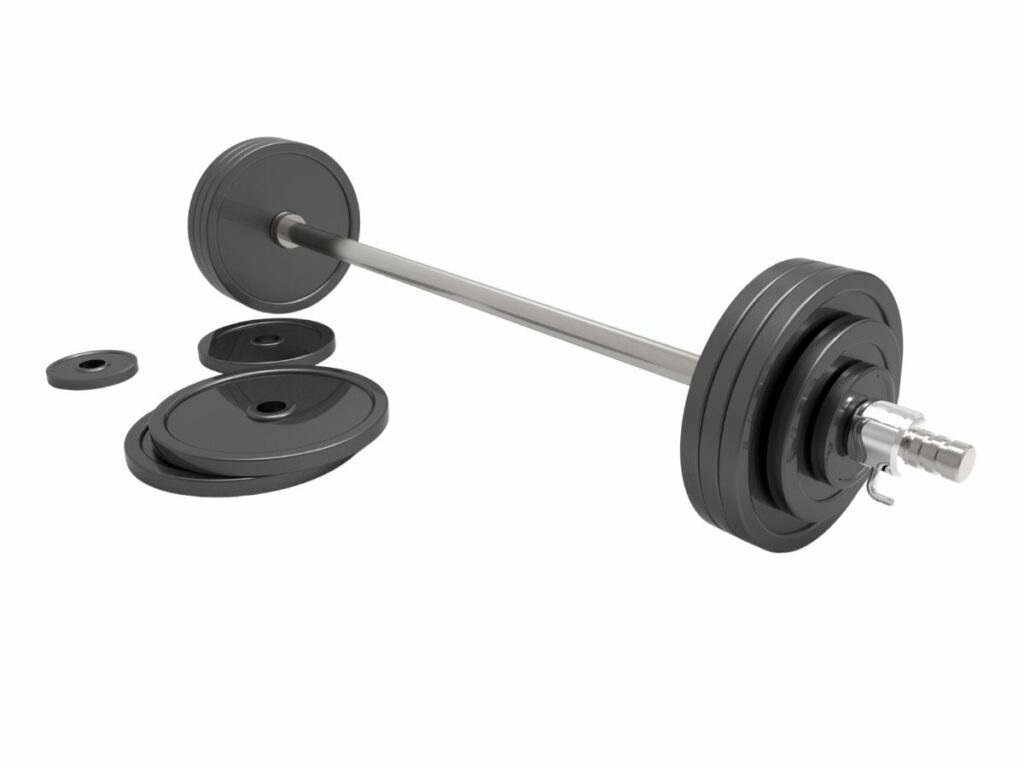
Kettlebells
Kettlebells are cannonball-shaped weights with a single looped handle on top.
Benefits:
- Kettlebells offer a combination of strength, flexibility, and cardiovascular training.
- They allow a range of motion and swinging movements not possible with other free weights.
- Kettlebells can improve core strength and stability.
- They are versatile, allowing for a variety of exercises with just one piece of equipment.
- Kettlebells are compact and portable, making them ideal for home workouts.
Considerations:
- It can be challenging to learn the correct form for kettlebell exercises.
- Kettlebell swings and lifts can be risky without proper technique and guidance.
- Selecting the appropriate weight is essential to avoid injuries.
- The thick handles of kettlebells may be challenging for people with smaller hands.
- Compared to dumbbells and barbells, kettlebells offer less incremental weight progression.
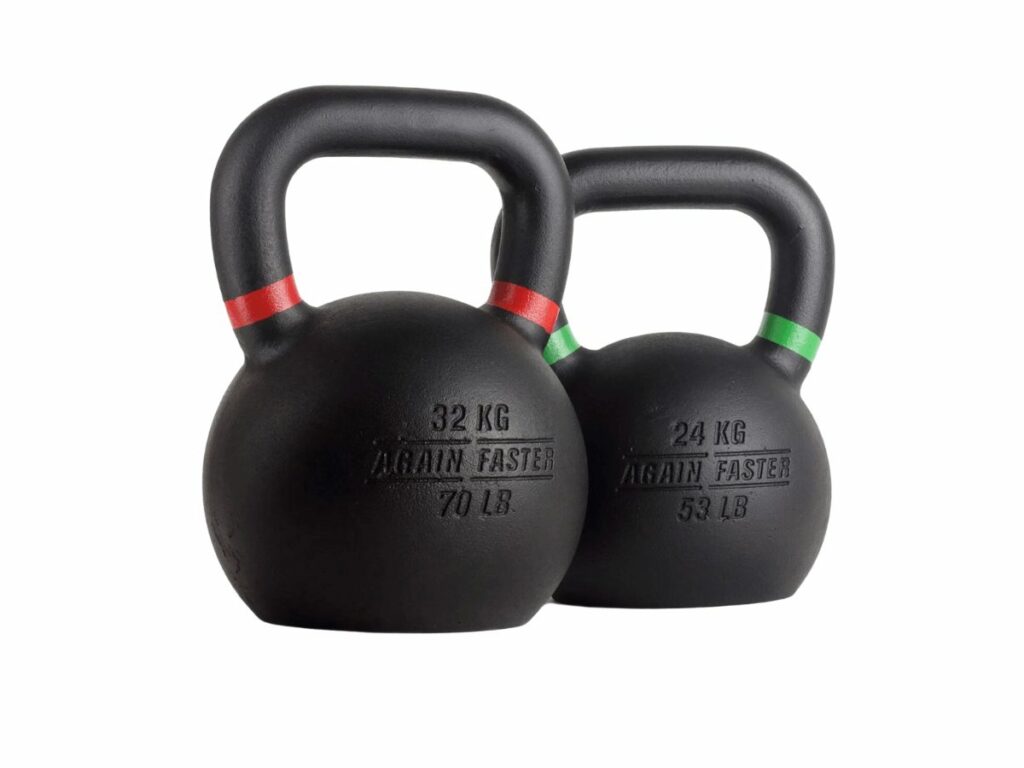
Weight Machines
Weight machines represent a segment of gym equipment designed to target and isolate specific muscle groups, delivering efficient and effective workouts. Some of these machines include the cable machines and leverage machines. Let’s unbox the benefits and consideration of these machines:
Cable Machines
Cable machines consist of a metal structure with weight stacks that are raised and lowered using a cable and pulley system. The cables are attached to various grips or attachments, allowing users to perform a wide range of exercises.
Yanre Fitness stands out as a prominent strength equipment manufacturer, providing durable, user-friendly cable machines designed with professional workout angles and advanced ergonomics.
Benefits:
- Allows for a wide range of motion and versatility in workouts
- Assists in maintaining correct form, reducing the risk of injury
- Offers constant tension throughout the workout, leading to better muscle development
- Easily adjustable weight stacks accommodate for varied fitness levels
- Provides stability, especially beneficial for beginners
Considerations:
- Over-reliance may lead to neglect of important stabilizing muscles
- Higher learning curve in setup and use for inexperienced individuals
- Can be intimidating to use for those new to gym environments
- May require more maintenance due to moving parts
- Occupies significant space, which may be a concern in compact gym setups
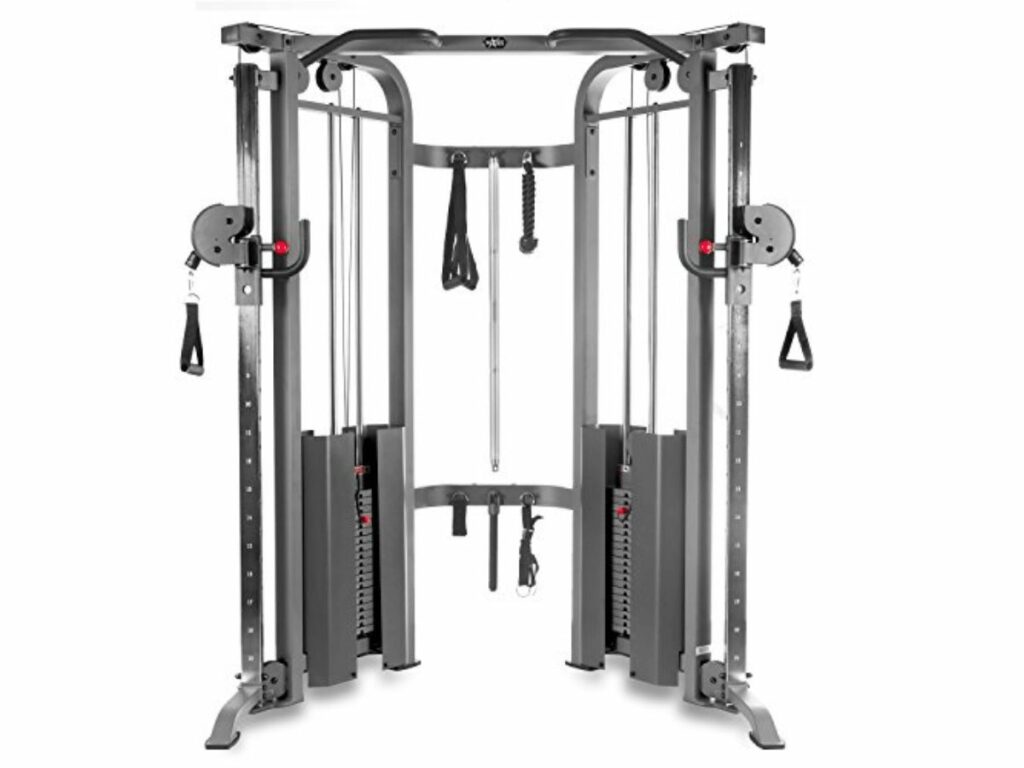
Leverage Machines
Leverage machines are a type of strength training equipment commonly found in gyms. These machines use a lever system and weight plates to provide resistance. The design of leverage machines allows users to perform exercises with a guided range of motion, providing stability and support during the movement.
Benefits:
- Safer to use without a spotter compared to free weights
- Allows for increased load and intensity in workouts
- Facilitates isolation workouts efficiently
- Typically designed for dual use, increasing the functionality per square foot
- High weight capacity can accommodate advanced users
Considerations:
- May not be suitable for individuals with certain joint issues
- Requires a larger investment upfront compared to other equipment types
- Takes up considerable space, potentially limiting the number of units in a facility
- Potential intimidation factor for novice users
- Limited in terms of functional and compound movements
Body Weight Equipment
Body weight equipment leverages an individual’s body weight to provide resistance, making workouts highly customizable. Below are some discussion of the machines that body weight equipment involve:
Pull-Up Bars
Pull-up bars are simple yet effective pieces of equipment commonly found in gyms and fitness facilities. They consist of a horizontal bar that is mounted on a frame or attached to a wall. Pull-up bars are primarily used for upper body exercises, particularly targeting the muscles of the back, arms, and shoulders.
Benefits:
- Targets multiple muscle groups simultaneously, promoting functional strength
- Highly durable with minimal maintenance required
- Offers versatility with a variety of exercises beyond pull-ups
- Low cost with high potential return on investment
- Takes up little space, ideal for facilities of any size
Considerations:
- May not be suitable for individuals with certain shoulder or wrist conditions
- Requires a certain level of base strength to use effectively
- Can be intimidating to some, potentially limiting usage
- Limited in terms of lower body exercises
- Possible risk of injury if used incorrectly, such as in kipping pull-ups
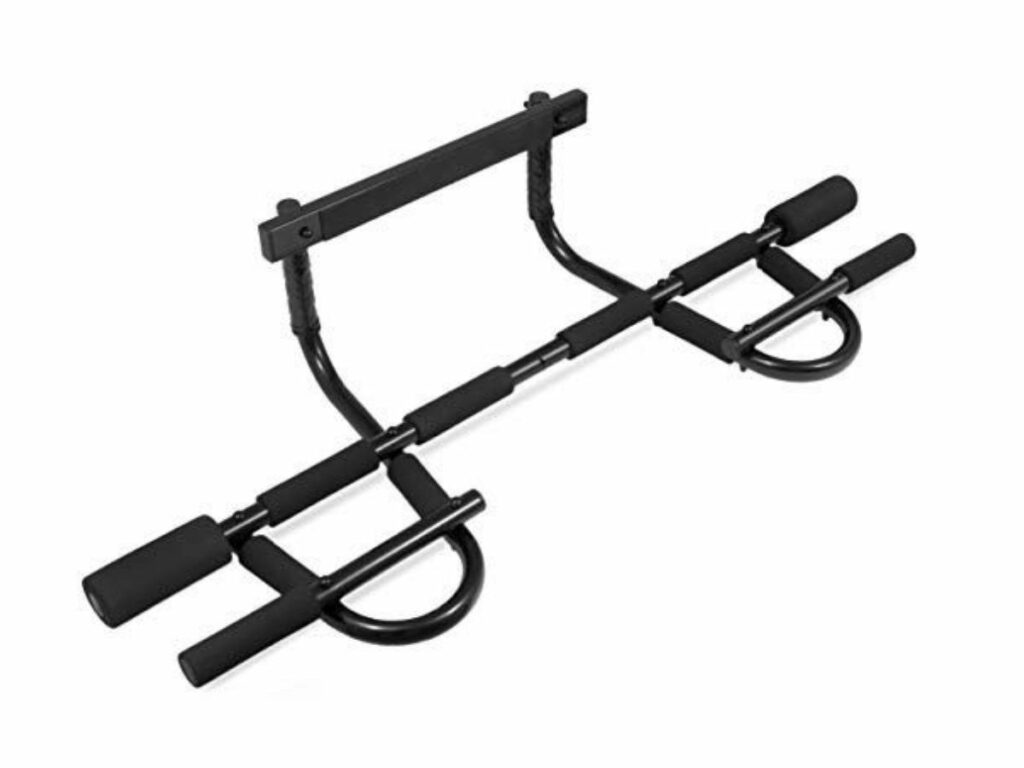
Suspension Trainers
Suspension trainers, also known as suspension training systems, are portable workout tools that use straps and handles to leverage body weight and gravity. They typically consist of adjustable straps that can be anchored to a stable structure such as a door, a bar, or a tree.
Benefits:
- Enables full-body workouts with just one piece of equipment
- Highly portable and doesn’t require much space
- Adjustability allows for varied intensity, catering to all fitness levels
- Enhances core stability and strength
- Encourages balance and coordination alongside strength training
Considerations:
- Requires training to use correctly, to avoid injury
- Potential risk of fall injuries if not secured properly
- Not ideal for heavy strength training
- May require additional investment in supportive accessories
- Certain exercises may be challenging for beginners
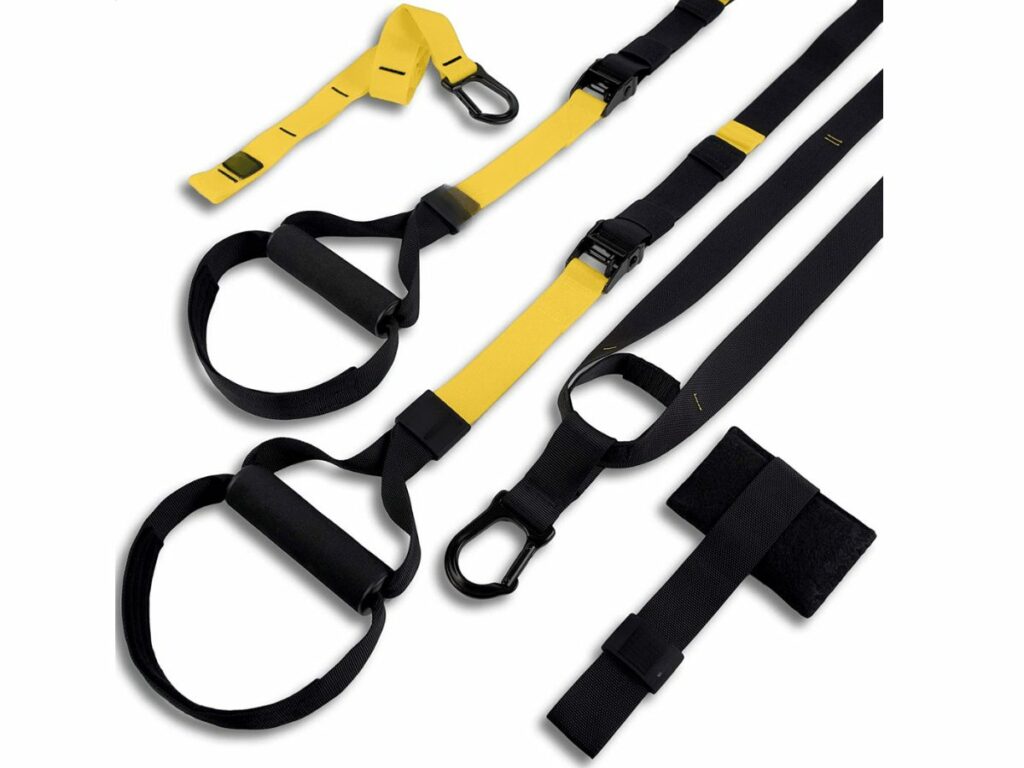
Miscellaneous Equipment
The final category includes a wide range of miscellaneous equipment. As a gym owner, understanding the critical role of weight benches in a comprehensive workout routine is vital.These tools often serve a specific purpose, provide unique advantages, and can add diversity to any training regimen. Let’s discuss some popular miscellaneous equipment, including weight benches and power racks.
Weight Benches
A weight bench is a fundamental piece of gym equipment. Its primary purpose is to provide support during weight lifting, increasing the effectiveness and safety of various workouts. The bench can be adjusted to accommodate different exercises targeting various muscle groups.
Benefits:
- Enables a variety of exercises, improving workout versatility
- Facilitates targeted muscle training, aiding muscle development
- Ensures proper posture and alignment during workouts
- Provides stability, reducing the risk of injury
- Enhances workout comfort, increasing user satisfaction
Considerations:
- Requires ample space, affecting gym layout
- Demands regular maintenance, impacting operational costs
- Choice of fixed or adjustable design, influencing workout diversity
- Quality affects longevity and user experience
- Can be used in conjunction with other equipment, demanding strategic placement
The table below highlights the features and benefits of weight benches, essential gym equipment for strength training. Discover how weight benches provide support, versatility, and adjustable features to enhance workouts, targeting various muscle groups and promoting proper form and alignment.
| Features | Description |
| Support and Stability | Weight benches offer a stable and supportive platform for performing various weightlifting exercises, providing a secure base for proper form and technique. |
| Adjustable Design | Many weight benches have adjustable features, such as incline, decline, and flat positions, allowing users to target different muscle groups and vary the difficulty of their workouts. |
| Versatility | Weight benches can be used for a wide range of exercises, including bench press, dumbbell flyes, seated shoulder press, step-ups, and more, making them a versatile piece of equipment for strength training. |
| Muscle Development | Using a weight bench facilitates targeted muscle development in the chest, shoulders, arms, and core, allowing individuals to progressively increase their strength and muscle mass. |
| Proper Body Alignment | Weight benches help maintain proper body alignment and posture during exercises, reducing the risk of injury and ensuring effective muscle engagement for optimal results. |
| Safety Features | Many weight benches incorporate safety features such as padded surfaces, non-slip grips, and adjustable safety catches to enhance user safety and prevent accidents during workouts. |
| Compact and Space-Saving | Weight benches come in various sizes and designs, including foldable or compact options, making them suitable for home gyms or spaces with limited room for equipment. |
| Accessory Compatibility | Weight benches often have compatibility with additional accessories, such as leg extensions, preacher curl attachments, or squat racks, allowing for more exercise variations and customization. |
| Suitable for All Fitness Levels | Weight benches can be used by individuals of all fitness levels, from beginners to advanced lifters, as they can be adjusted to accommodate different exercise intensities and weights. |
Power Racks
A power rack, also known as a squat rack, is a versatile piece of gym equipment primarily used for free weight workouts. They are designed to safely hold and catch the barbell during various exercises. Having power racks not only increased gym membership numbers but also boosted gym reputation as a well-equipped gym.
Benefits:
- Facilitates heavy lifting, contributing to muscle growth
- Increases safety during solo workouts
- Accommodates a wide range of exercises, enhancing workout versatility
- Offers adjustable settings, accommodating different heights and exercises
- Encourages proper lifting form, reducing the risk of injury
Considerations:
- Requires significant floor space, impacting gym layout
- Quality and design affect safety and durability
- Requires weight plates and a barbell for use, increasing equipment costs
- Adjustment mechanisms should be user-friendly
- Proper usage instructions should be available, ensuring client safety
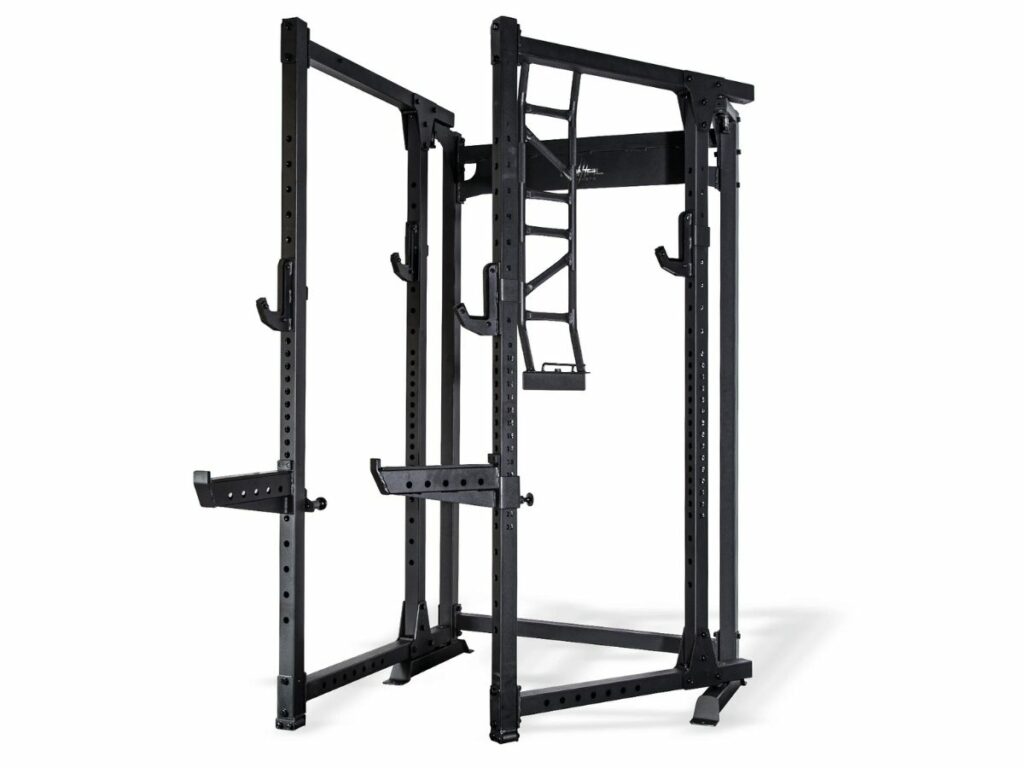
3. Flexibility and Balance Equipment
In the gym environment, not all equipment revolves around resistance training or cardio. A unique, yet crucial, category is the flexibility and balance equipment, encompassing various tools that target core stability, flexibility, and balance. These are foundational elements that aid in performance across other training domains.
Here are the different flexibility and balance equipment with its benefits and considerations:
Yoga Mats
For a gym, owning high-quality yoga mats is essential, serving as an integral part of various workout routines and exercises. Yoga mats provide a soft, stable surface for performing yoga poses, stretches, and floor-based exercises. Most importantly, they prevent the risk of slipping during sweat-inducing sessions, which could otherwise lead to injuries.
Benefits:
- Provides cushioning and reduces the impact on joints.
- Prevents slipping and injuries.
- Defines personal workout space.
- Increases the effectiveness of yoga postures by providing grip.
- Easy to clean and maintain.
Considerations:
- Look for mats with adequate thickness for comfort.
- The mat surface should be slip-resistant.
- The mat material should be durable and easy to clean.
- Consider the storage space and portability.
- Should be eco-friendly and non-toxic.
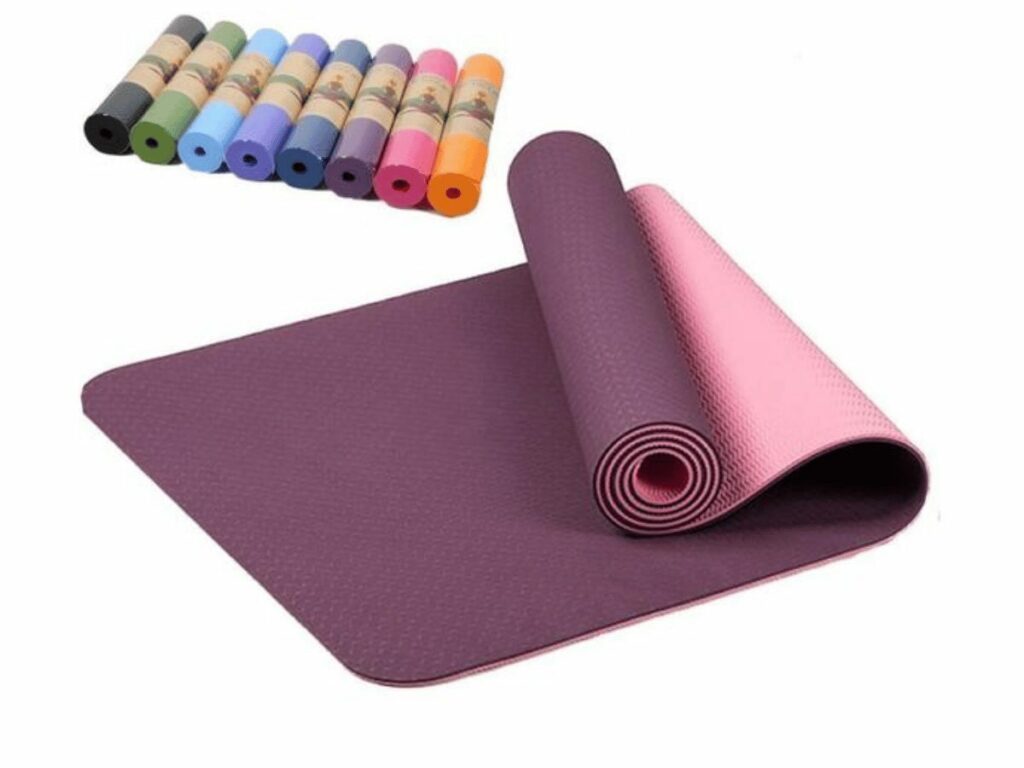
Stability Balls
Also known as exercise balls or Swiss balls, stability balls are incredibly versatile. As a seasoned gym owner, providing stability balls in the gym has always been a no-brainer. They add an element of instability to workouts, challenging the body to engage its core to maintain balance.
Benefits:
- Improves core strength and stability.
- Enhances balance and body awareness.
- Provides a dynamic surface for various exercises. For example, in a core strengthening class, participants use stability balls to perform exercises like plank rolls and seated lifts.
- Can be used for both upper and lower body workouts.
- Increases the difficulty level of exercise.
Considerations:
- Should be burst-resistant for safety.
- The size should be appropriate for the user’s height.
- The surface should be slip-resistant.
- Must be easy to inflate and deflate for storage.
- Consider the weight limit of the ball.
Foam Rollers
Foam rollers have become a mainstay in many gyms due to their versatility and effectiveness in muscle recovery and flexibility improvement. These simple yet powerful tools are instrumental in myofascial release, which aids in muscle relaxation and tension reduction.
From a personal standpoint, the value of foam rollers can’t be overstated. The practical benefits that have been observed from their use, particularly in recovery and overall muscle health, are immense.
Benefits:
- Promotes muscle recovery by improving blood circulation.
- Reduces muscle soreness post workout.
- Enhances range of motion and flexibility.
- Aids in injury prevention by releasing muscle knots.
- Boosts performance by preparing muscles before workout.
Considerations:
- Proper technique should be adhered to, to prevent any injury.
- The intensity of the pressure applied should be adjusted according to individual comfort.
- Different sizes and types of foam rollers cater to different muscle groups.
- The firmness of the foam roller impacts the level of pressure provided.
- Foam rollers should be regularly cleaned and maintained.
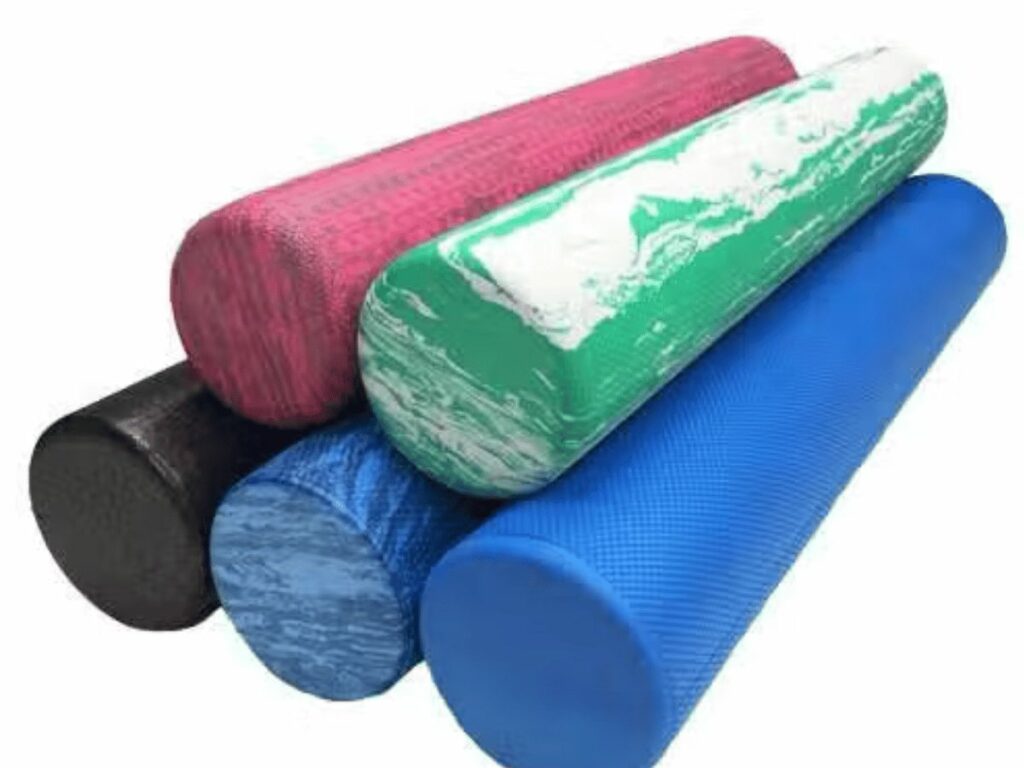
Balance Boards
Balance boards are devices used for improving body balance, coordination, and strength. Regular use of these boards can result in improved core strength and stability. Incorporating balance boards into regular workouts has been seen to deliver noticeable improvements in overall balance and core strength.
Benefits:
- Improves core strength and stability.
- Enhances body coordination and balance.
- Boosts performance in various sports.
- Promotes better posture.
- Develops proprioception, which is awareness of the position and movement of the body.
Considerations:
- Beginners should start slow to prevent injuries.
- The surface of use should be non-slippery and firm.
- Different types of balance boards cater to different skill levels and purposes.
- The board should be regularly inspected for any wear and tear.
- Protective gear such as helmets, knee pads may be necessary for beginners or for performing advanced moves.
4. Functional Training Equipment
Functional Training Equipment plays an essential role in any gym setting, these equipment simulate real-world movements, focusing on strength, balance, and flexibility. They enhance the ability to perform daily activities by training the muscles to work together. The versatility of these tools makes them applicable to a variety of workouts and fitness levels.
Let’s have an understanding of its different equipment togther with their benefits and considerations:
Battle Ropes
Battle Ropes offer dynamic strength and endurance exercises, promoting functional movements and coordination. They provide effective, high-intensity, zero-impact conditioning and continuous tension on the muscles. Ropes come in various lengths, thicknesses, and materials, each serving different workout purposes and intensities.
Benefits:
- Full body workout targeting multiple muscle groups simultaneously
- High-intensity, low-impact training that is easy on joints
- Improvement in core strength and stability
- Effective for boosting cardiovascular health
- Enhances coordination, balance, and agility
Considerations:
- Requires ample space for safe and effective use
- Selection of appropriate rope weight and thickness is critical
- Requires proper technique to avoid injury
- Not suitable for people with shoulder injuries
- Needs an anchor point for setup
Suspension Trainers
Suspension Trainers offer a complete body workout using one’s body weight as resistance. They allow for adjustments in intensity by simply altering the body’s angle. They are portable, versatile, and cater to all fitness levels. In my experience, suspension trainers provide an incredibly diverse range of exercises, but mastering the technique is critical.
Benefits:
- Promotes balance, flexibility, and core stability
- Offers total body workout targeting multiple muscle groups
- Adjustability allows for various intensity levels
- Suitable for both strength training and rehabilitation
- Enables hundreds of exercises
Considerations:
- Requires understanding of body mechanics
- Potential for injury if not used correctly
- Need for a sturdy anchor point
- Adjustment might be challenging for beginners
- Proper setup is required to ensure safety
Medicine Balls
A small, heavy, and grippable ball, the medicine ball adds another layer to various fitness activities, from strength training to balance to rehab exercises. With its many variations in weights and textures, it’s designed to engage every part of the body, unlike traditional weight training equipment.
This equipment always amzed me with its offering of more comprehensive approach to functional training and fitness activities in my gym.
Benefits:
- Can be used for almost every exercise and movement: seated, standing, lying down, static movements, and dynamic movements.
- They don’t damage floors if dropped, unlike dumbbells, and have a lower risk of injury.
- They help to tighten core muscles and improve functional movement.
- Ideal for generating explosive power, speed, and endurance.
- Regular medicine ball training can significantly enhance cardiovascular endurance.
Considerations:
- The heaviness of the ball can either add to or reduce the effectiveness of a workout depending on how it’s used.
- It may increase the risk of injury if not used correctly.
- Heavier medicine balls may not be as easily transportable compared to other gym equipment like jump ropes or resistance bands.
- Medicine balls are made from various materials like leather, rubber, nylon, etc. The choice of material depends on personal preference and the specific workout needs.
- The weight of the medicine ball chosen should match the user’s capability to carry it, especially for beginners.
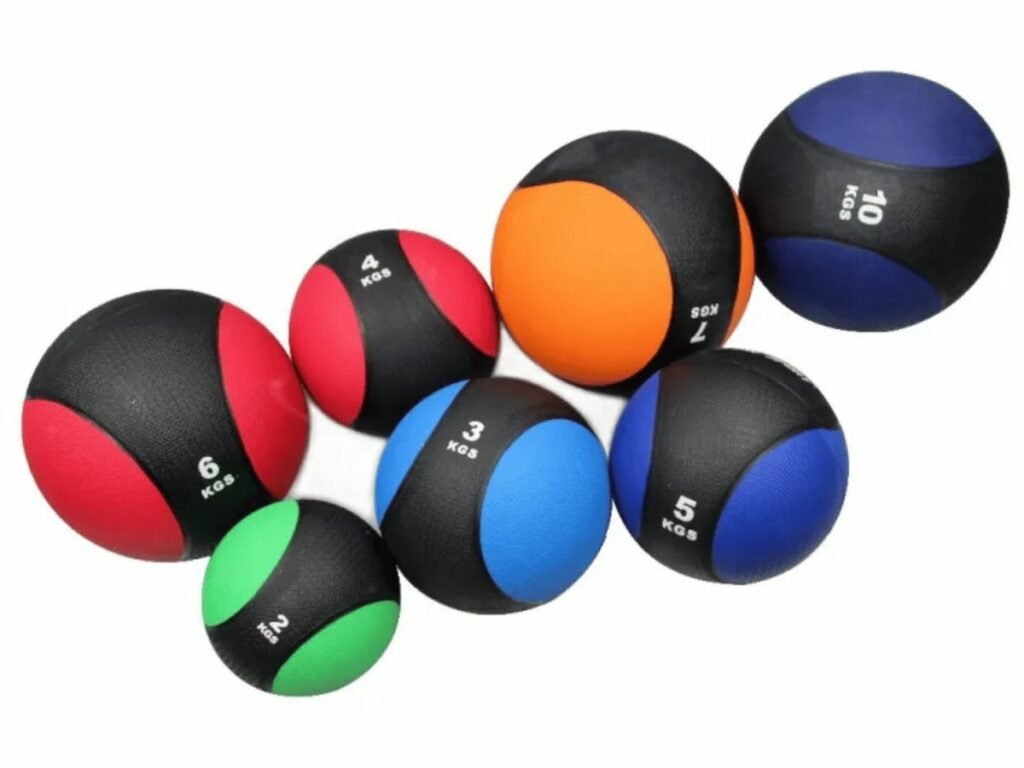
5. Conclusion
With this comprehensive guide, we’ve untangled the world of gym equipment, giving you the insights needed to navigate the diverse array of tools available. But remember, no single gym equipment is the end-all, be-all solution, but together they provide an unparalleled palette to sculpt your ideal workout regimen.
If you are looking for a gym equipment manufacturer in China of top graded gym equipment, Yanre Fitness is here for you, you are not just investing in high-quality gym equipment but also in a fitness community that’s got your back. Having any questions or need more product details, don’t hesitate to contact us today. After all, fitness is a journey, and we’re in this together.
Related articles:








